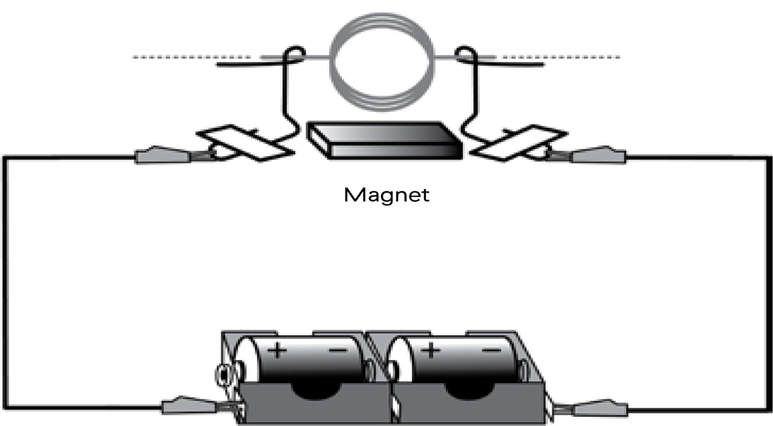5. Building an Electric Motor
What do all the items below have in common?
That's right -- they all use electric motors in order to function!
What other examples of electric motor can you think of?
Speak to your partner about it! Share your ideas!
All electric motors are, at their core, very similar and very simple.
In order for us to understand electricity and magnetism better, let's build a simple electric motor. We will follow the instructions of the video below:
What other examples of electric motor can you think of?
Speak to your partner about it! Share your ideas!
All electric motors are, at their core, very similar and very simple.
In order for us to understand electricity and magnetism better, let's build a simple electric motor. We will follow the instructions of the video below:
An electric motor uses electricity. The moving electrons coming out of the battery make the copper wire magnetic. The magnetic forces of attraction and repulsion in the wire react with the magnet, causing the wire to spin.
The reverse is also true: moving magnets through coils of wire generate electricity.
This is the essence of the relationship between electricity and magnetism: the movement of one causes the other.
Now, let's build a motor ourselves! Follow the diagram below and get your motor ready.
The reverse is also true: moving magnets through coils of wire generate electricity.
This is the essence of the relationship between electricity and magnetism: the movement of one causes the other.
Now, let's build a motor ourselves! Follow the diagram below and get your motor ready.
Finished building a motor? Good job!
Now, your second task is to make your own DIAGRAM of the motor and communicate your findings using scientific language; do this INDIVIDUALLY. Please hand this diagram in.
After recording your observations, look at your motor and think -- how could you make a simple fan using this motor? Use paper, scissors and anything else you may want. You can also colour your fan to make it look more interesting.
Now, your second task is to make your own DIAGRAM of the motor and communicate your findings using scientific language; do this INDIVIDUALLY. Please hand this diagram in.
After recording your observations, look at your motor and think -- how could you make a simple fan using this motor? Use paper, scissors and anything else you may want. You can also colour your fan to make it look more interesting.

